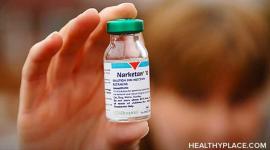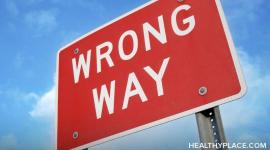What is Bipolar Depression? Bipolar Depression vs Depression
What is Bipolar Depression?
Bipolar Disorder is comprised of two mood states: bipolar mania and bipolar depression. For many with bipolar disorder, it is the bipolar depression symptoms that have the greatest impact. When ill, patients spend more time in the bipolar depression phase and they find it takes longer to recover from bipolar depression than bipolar mania. In addition, suicide and suicide attempts usually take place during a bipolar depression or mixed episode phase of bipolar disorder.
Bipolar Depression vs Depression
The Difference Between Unipolar and Bipolar Depression
Both bipolar depression and unipolar depression (depression not associated with bipolar disorder) are considered to have genetic and environmental factors and they share many symptoms. So it's easy to be confused over the differences between unipolar and bipolar depression as they often look similar. They share the symptoms of:
- sadness
- hopelessness
- pessimism
- anxiety
- sleep problems
But after that, unipolar depression and bipolar depression go off in very different directions.
The biology of these disorders is different, effective treatments are different, and in some respects, the symptoms are also different. Both forms of depression can be very severe and carry a risk of suicide. However, the underlying difference between bipolar depression vs depression is that people with bipolar depression also experience episodes of either mania or hypomania.
It is important to make this distinction because the treatments for the two depressions are very different. Failure to make an accurate diagnosis can result in treatments that are ineffective or that can even make bipolar disorder worse.
(Detailed information on bipolar depression treatment.)
Suicide in Bipolar Depression and Depression
At the beginning of this article, we talked about bipolar depression and suicide. According to Dr. John Preston, the coauthor of books on mood disorders, the suicide rates differ greatly between the two depressions. Here is some information Dr. Preston provided on suicide and bipolar depression:
- The lifetime suicide rate for unipolar depression is 9%. The suicide rate for bipolar depression is 20%.
- The bipolar depression suicide rate reflects the fact that having a myriad of symptoms, including mixed mania, agitation, OCD, anxiety, and psychosis, can make a person extremely uncomfortable and desperate, along with being depressed.
- A person in a mixed state (episodes where depression, mania and possibly psychosis occur at the same time), has more energy and drive to actually try suicide.
- People who try to kill themselves want to end the pain. They don't want to end their lives, which is why so many more try than succeed.
(In-depth information on suicide and managing suicidal thoughts.)
APA Reference
Fast, J.
(2021, December 28). What is Bipolar Depression? Bipolar Depression vs Depression, HealthyPlace. Retrieved
on 2025, May 11 from https://www.healthyplace.com/bipolar-disorder/bipolar-depression/what-is-bipolar-depression-bipolar-depression-vs-depression




